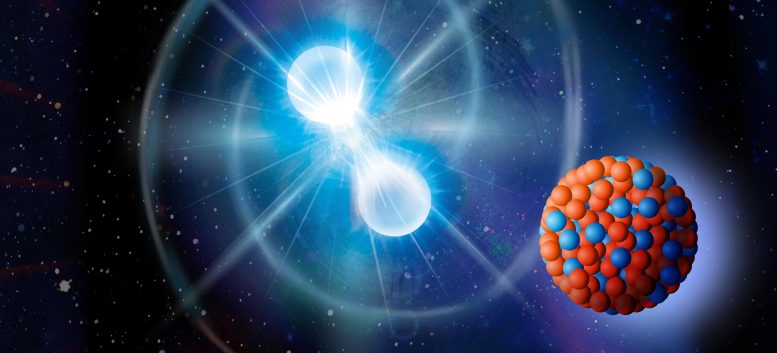
When a star dies, the violent ending can lead to the birth of a neutron star. Neutron stars are real heavyweights in the universe – a teaspoon of the several-kilometer celestial body would weigh a billion tons. There is an unimaginable size difference between the atomic nucleus of the isotope lead-208 and a neutron star, but it is largely the same physics that describes their properties. Now researchers at Chalmers have developed a new computational model to study the atomic nucleus of lead. The 126 neutrons (red) in the nucleus form an outer envelope, which can be described as a skin. How thick the skin is, is linked to the strong force. By predicting the thickness of the neutron skin, knowledge can increase about how the strong force works – both in atomic nuclei and in neutron stars. Credit: JingChen | Chalmers University of Technology | Yen Strandqvist
Massive neutron stars colliding in space are believed to be able to create precious metals such as gold and platinum. Although the properties of these stars are still an enigma, the answer may lie beneath the skin of one of the smallest building blocks on Earth – an atomic nucleus of lead. Getting the nucleus of the atom to reveal the secrets of the strong force that governs the interior of neutron stars has proven difficult. Now a new computer model from Chalmers University of Technology in Sweden, can provide answers.
Chalmers researchers present a breakthrough in the calculation of the atomic nucleus of the heavy and stable element lead in a recently published article in the scientific journal Nature Physics.
The strong force plays the main role
Despite the immense size difference between a microscopic atomic nucleus and a neutron star several kilometers in size, it is essentially the same physics that governs their properties. The common denominator is the strong force that holds the particles – the protons and neutrons – together in an atomic nucleus. The same force also prevents a neutron star from collapsing. Although the strong force is fundamental in the universe, it is difficult to include it in computational models. This is especially true when it comes to heavy neutron-rich atomic nuclei such as lead. Therefore, scientists have wrestled with many unanswered questions in their challenging calculations.

Andreas Ekström, Associate Professor, Department of Physics, Chalmers University of Technology, Sweden. Credit: Chalmers University of Technology | Anna-Lena Lundqvist
A reliable way to make calculations
“To understand how the strong force works in neutron-rich matter, we need meaningful comparisons between theory and experiment. In addition to the observations made in laboratories and with telescopes, reliable theoretical simulations are therefore also needed. Our breakthrough means that we have been able to carry out such calculations for the heaviest stable element – lead,” says Andreas Ekström, one of the main authors of the article and Associate Professor at the Department of Physics at Chalmers.
The new computer model from Chalmers, developed together with colleagues in North America and England, now shows the way forward. It enables high-precision predictions of properties for the isotope* lead-208 and its so-called ‘neutron skin’.

Christian Forssén, Professor, Department of Physics, Chalmers University of Technology, Sweden. Credit: Chalmers University of Technology | Anna-Lena Lundqvist
The thickness of the skin matters
It is the 126 neutrons in the atomic nucleus that form an outer envelope, which can be described as a skin. How thick the skin is, is linked to the properties of the strong force. By predicting the thickness of the neutron skin, knowledge can increase about how the strong force works – both in atomic nuclei and in neutron stars.
“We predict that the neutron skin is surprisingly thin, which can provide new insights into the force between the neutrons. A groundbreaking aspect of our model is that it not only provides predictions, but also has the ability to assess theoretical margins of error. This is crucial for being able to make scientific progress,” says research leader Christian Forssén, Professor at the Department of Physics at Chalmers.
Model used for the spread of the coronavirus
To develop the new computational model, the researchers have combined theories with existing data from experimental studies. The complex calculations have then been combined with a statistical method previously used to simulate the possible spread of the coronavirus.
With the new model for lead, it is now possible to evaluate different assumptions about the strong force. The model also makes it possible to make predictions for other atomic nuclei, from the lightest to the heaviest.
The breakthrough could lead to much more precise models of, for example, neutron stars and increased knowledge of how these are formed.
“The goal for us is to gain a greater understanding of how the strong force behaves in both neutron stars and atomic nuclei. It takes the research one step closer to understanding how, for example, gold and other elements could be created in neutron stars – and at the end of the day it is about understanding the universe,” says Christian Forssén.
Notes
*Isotope: An isotope of an element is a variant with a specific number of neutrons. In this case, it is about the isotope lead-208 which has 126 neutrons (and 82 protons).
Reference: “Ab initio predictions link the neutron skin of 208Pb to nuclear forces” by Baishan Hu, Weiguang Jiang, Takayuki Miyagi, Zhonghao Sun, Andreas Ekström, Christian Forssén, Gaute Hagen, Jason D. Holt, Thomas Papenbrock, S. Ragnar Stroberg and Ian Vernon, 22 August 2022, Nature Physics.
DOI: 10.1038/s41567-022-01715-8
During the study, the researchers worked at Chalmers University of Technology in Sweden, Durham University in the UK, University of Washington, Oak Ridge National Laboratory, University of Tennessee and Argonne National Laboratory in the USA and TRIUMF and McGill University in Canada.
The research has been carried out using some of the world’s most powerful supercomputers. The Chalmers researchers have mainly been funded by the Swedish Research Council and the European Research Council.


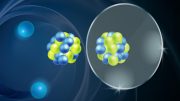

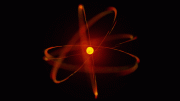
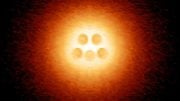
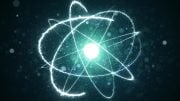


The interactions and balances of topological vortex fields cover all short-distance and long-distance contributions, and are the basis of the formation and evolution of cosmic matter.
The attractive forces. Why is there something rather than nothing in the universe:
A: ) Because Magnetism is an attractive force, not a repulsive force ?
That’s a guess, gravity is also an attractive force.
Isaac Asimov in a book thought it was because there were more protons than electrons in the universe ( thus forming matter )
To prove Magnetism is an attractive force – place two magnets close together freely…what do they do attract to each other or fly apart ? Now if I am correct the strong nuclear force fundamentally is an attractive force at the atomic scale?
” The common denominator is the strong (nuclear ) force that holds the particles – the protons and neutrons – together in an atomic nucleus.
The idea of matter and anti matter ( electrons vs positrons etc ) sounds like science fiction because we rarely see anti matter because the particles annihilate each other, but because of the attractive forces matter maybe able to escape anti matter ?
The topological vortex field may be the graviton that physics has been looking for. Topologically trivial (N=0) graviton pairs undergo Kelvin motion, while nontrivial (N=±1) graviton pairs behave a rotational motion around a fixed guiding center. The point defects in the bifurcation processes of the graviton pairs generate or annihilate at the limit points, and encounter, split or merge at the bifurcation points of the 3-dimensional vector order parameter, and form unstable point defects system.
what is called ‘residual strong force’ interacts to form elements and chemical bonds…..
Tetryonics reveals the the electric fields of quarks on protons and neutrons form a point of positive or negative charge that attracts positive protons and neutral neutrons together and causes them to click and bind
-Kelvin C. Abraham
There are no mysteries. Unless you believe the Standard Model and Relativity. They are the source of all mysteries but that should come as no surprise, since every new piece of scientific data and information is an anomaly, to them. What else would you expect from a bogus theory based on a fantasy. In order to believe Relativity, one must accept the erroneous notion, that Time is variable and the speed of light is constant, independent of your inertial frame of reference. There is nothing in our lives and/or our experience through all of human history, that even suggests, that Time might be in anyway variable. To all and everything we know, Time is constant not variable and light is NOT sound, so we have no reason to assume there is any barrier to the speed of light or that the speed of light should be constant, regardless of the inertial frame of reference. In fact, we have plenty of proof that things can move faster than our accepted speed of light, photons included but the Standard Model is based on magic and calls them virtual particles that wink in and out of existence, by the magic of Relativity thanks to that great Wizard, Einstein!
IN TRUE PHYSICS, THERE IS NO MAGIC!
The Halflec Model of subatomic structure, reveals all contemporary scientific mysteries as self-evident facts. The reason that there are no mysteries with the Halflec Model is, because the model is 100% correct and explains the universe and everything in it, simply, naturally, intuitively and, Mathematically!
The Halflec Model explains things like, Black Holes, nuclear electrons, Magnetism, Superconductivity, what the universe looked like the instant BEFORE the Big Bang and everything else that modern science finds so mysterious and none of those things even need explaining because they are all self-evident and blatantly obvious and easily predictable.